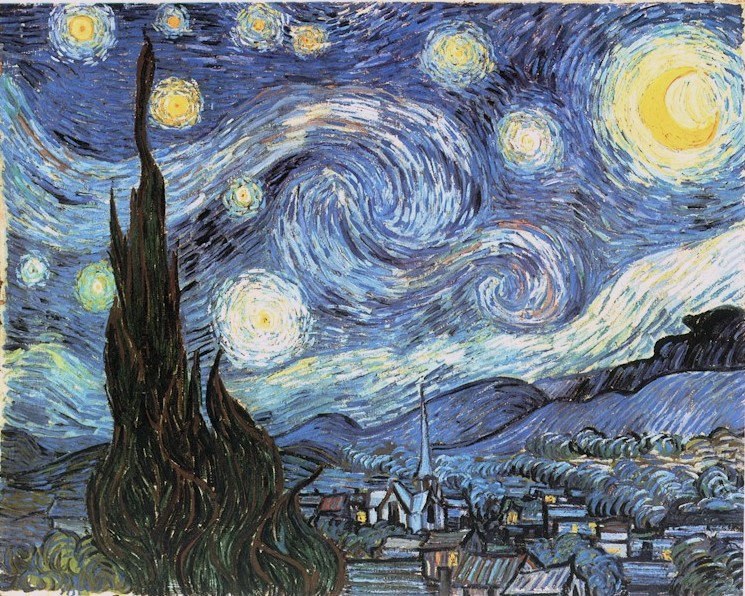This week in game design class, we learned about a relatively new trend in the game industry known as "Art Games". At it's core, an art game is an interactive experience in which the player's main goal is not necessarily to win (or not to lose). Although this is a very broad description for a type of game which is not yet formally defined, I think the main point of an art game is to give each user a unique emotional experience which is often open to interpretation.
As you may have guessed, I was then tasked with creating a non-digital Art game. The constraint was that this game needed to be somehow based on Van Gogh's Starry Night painting.
How do you go about turning a painting into a game?
First my group and I examined the painting, read analyses and critique's of the work, and formulated a list of feelings and emotions invoked by the image. The general consensus was that we felt cold, alone, and melancholy.
As a stepping stone to creating our non digital art game, we were also asked to each draw a parallel between this work of art (and the feelings associated with it) and a moment in a video game we had previously played. For me, this moment happened in Chrono Trigger (my favourite JRPG of all time). At about 3/4's of the way through the game, players are presented with Magus, a boss who's intentions are seemingly unknown. You can either kill Magus, or persuade him to join your party. If you do choose to kill him, the game immediately hits you right in the "feel bads". Maybe it's the dark surrounding atmosphere of the battle, or the cutscene that follows... One thing is for sure, this song gets me every time. http://www.youtube.com/watch?v=aQx9QaAxhk8
Anyway, back to the game... The board turned out like this:
The game's premise is a walk through one's own psyche in a nightmare. Players each are given a unique experience as they are asked to share key memories with the game, which will affect the outcome of the game. As you may have guessed, this is a single player game.
Here's a rundown of the rules:
------------------------------------------------------------------------------------------------------------
Materials required:-
• Dice
• 20 tiled circular board
• 16 “memory-fragment” cards
• 4 blank “key-memory” cards
• Writing utensils for the “key-frame” cards
Rules:-
• The player must write down four personal “key-memories” on the empty cards and then shuffle the four cards with the rest of the “memory-fragment” cards.
• The cards are then placed face down individually on the tiles.
• The player then rolls the die and then moves the according number of tiles on the board
• Any memory cards on a tile that the player lands on are to be flipped and read. The player must then “relive” that memory in their heads. The respective card is then removed from the game and the tile it was on is considered “empty”
• If a player lands on an empty tile, he/she must advance to the next “non-empty” tile.
• The game ends either when there are no more “key-memory” cards on the board but there remains at least one “memory-fragment” card or when there are no more “memory-fragment” cards but at least one “key-memory” card. In the first case the player “loses” and slips into insanity and in the latter, the player gets to leave with his/her mind intact.
------------------------------------------------------------------------------------------------------------
After thoughts:
This game didn't turn out to be particularly fun, per se. The aspect that I'm most happy with is that every player is given a personalized, unique experience.


No comments:
Post a Comment